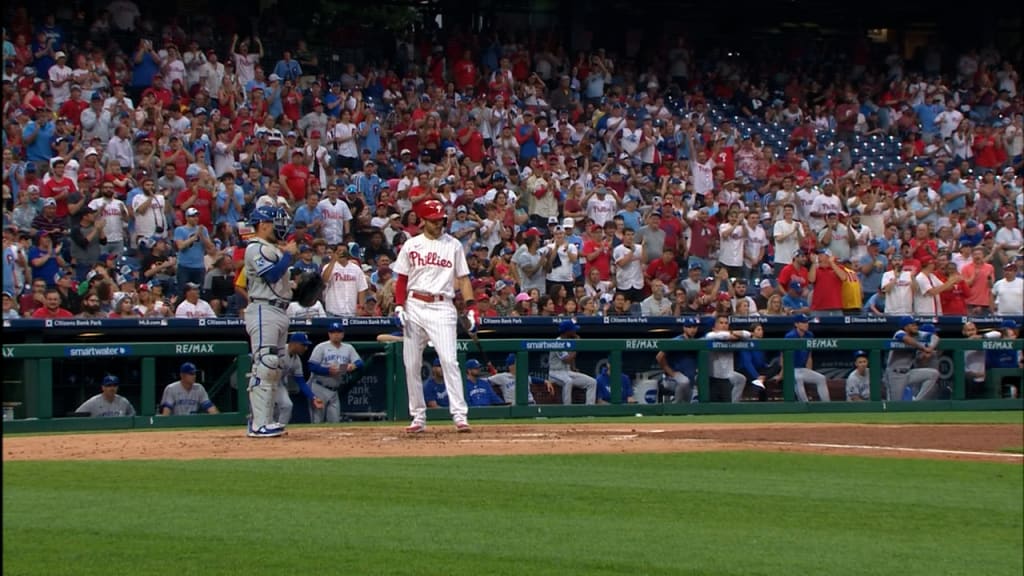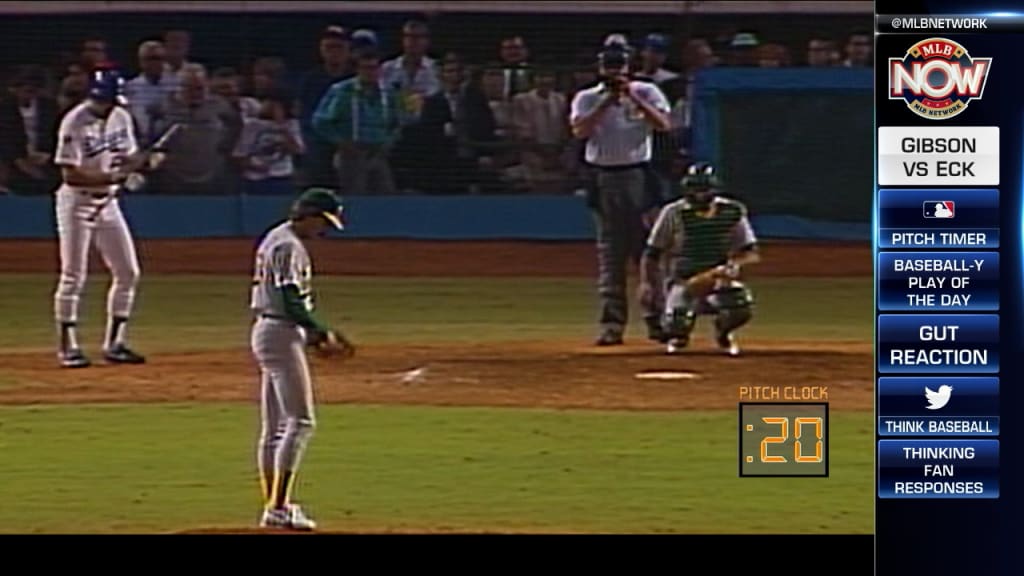6 reasons MLB games are hottest ticket in town
This browser does not support the video element.
Because we’re all old enough to remember those days when the only “fans” in the stands were cardboard cutouts, the sight of any living, breathing people coming out to the ol’ ballgame is still a very welcomed one.
Yet a notable aspect of this 2023 season is just how many fans have been attending MLB games.
In a surge not seen in MLB in a quarter-century, attendance is up 9 percent this season when compared to the same number of games in 2022 -- a total increase of more than 4 million fans and an average of 2,424 per game. Not including '21 and '22, which saw increases due to reduced COVID-19 restrictions, that would be the largest rise since 1998.
Whereas the 1998 spike was directly attributable to expansion to Arizona and Tampa Bay and the home run race between Mark McGwire and Sammy Sosa, this year’s rise is more widespread. As of this writing, 24 of the 30 clubs have seen an increase over last year’s per-game average, and 14 have had an increase of 10% or more. Saturday’s schedule had 13 games exceed 35,000 fans -- the first time that’s happened since Aug. 14, 2004. And all 15 games exceeded 30,000 in attendance, just the third time that has happened in the last 20 years.
Without polling every single fan at every single game, we can’t know precisely what’s driving the 2023 attendance spike. But we can make some educated guesses.
This browser does not support the video element.
1. THE PITCH TIMER
Because of the pitch timer, games are shorter. Much shorter. The average nine-inning game is 26 minutes shorter than a season ago:
Average Time of Game (Through 1,638 games)
2023: 2:38
2022: 3:04
2021: 3:10
Not only are they shorter, but, because of the combination of the pitch timer and the automatic runner in extra innings, there is less variation in how long they last. Fans going to a game and hoping to see the end can have a reasonable expectation for how long it will be until play is complete.
This has always been true in the NBA and NFL with their timed tilts. But for baseball, it is a new phenomenon, and the appeal of it is possibly represented in the days of the week in which the attendance increase is weighted:
Weekend games are and always have been the most popular games to attend. But look at what’s happening midweek. If you work Monday through Friday and/or have young kids, you can have more confidence about attending a weeknight game and seeing the end without sacrificing your bedtime.
That’s a big deal, and it’s led to some big increases.
This browser does not support the video element.
2. MORE ACTION
The MLB surveys that led to this year’s rule changes revealed that fans not only wanted a crisper pace but also wanted to see more of their favorite plays -- stolen-base attempts, triples, doubles and defensive gems.
The pickoff limits and defensive shift restrictions are attempts to influence more of those outcomes. The full effects of these changes might not be felt for quite a while, as teams may develop players differently in relation to the rules environment. But for now, the leaguewide on-base percentage is up eight points (from .312 to .320). So there’s more traffic on the bases, with small rises in the rate of doubles (from 1.63 to 1.71 per game) and triples (from 0.13 to 0.14), and a meaningful rise in the number of stolen bases (from 0.51 to 0.71).
As fans have digested the changes in pace and action over the course of this season, we’ve seen attendance pick up even more than usual in the summer months:
3. THE BALANCED SCHEDULE
Though it wasn’t discussed nearly as much as the rules changes, the adoption of a more balanced schedule in 2023 was a major alteration to MLB.
Teams went from 19 games against each division opponent to 13, and the benefit of this is not only fairer competition for the Wild Card spots, but more variety in matchups. For the first time in MLB history, every team has at least one series against every other team.
The biggest change to the schedule was an increase from 20 Interleague (AL vs. NL) games per team to 46. Though Interleague is not exactly a new phenomenon (it debuted in 1997), it remains a draw. (For example, did you notice that the Guardians sold out a pair of games against the Phillies on July 22 and 23?)
Last season, Interleague games drew 2,242 more fans per game than Intraleague (AL vs. AL, NL vs. NL) games. This season, the difference is more modest at 1,375 more fans per game for Interleague, but there are more than twice as many of those games. So that makes a difference.
This browser does not support the video element.
And let’s not forget that the balanced schedule affords fans the chance to see the biggest stars of the sport in more places. There is no bigger star -- and, therefore, better example of this -- than Shohei Ohtani. As of this writing, he’s made nine road starts as a pitcher. That’s nine times that fans in other markets could make plans to see him put on a two-way performance. Though the numbers are admittedly influenced by an Opening Day start in Oakland and an Independence Day start in San Diego, it’s interesting to note that those games have been attended by 3,888 more fans, on average, than those host teams have typically drawn this year.
4. THE EXPANDED POSTSEASON
We knew already that fans respond at the gates to the expanded postseason format, because last September’s attendance was the highest for that month since 2014. But this season has given us a glaring example of what is possible when a team takes advantage of that extra seed in October.
Until they claimed the NL’s sixth seed last year, the Phillies hadn’t reached the postseason since 2011. Little was expected of them going into the playoffs, yet they went on an invigorating run that fell just two wins shy of a World Series title. It awoke the fan base and inspired a home attendance increase of 10,366 fans per game at Citizens Bank Park so far this season -- the biggest increase in MLB.
With 20 teams having entered the week within five games of a postseason spot, there’s reason to believe late-season attendance will be strong yet again.
5. STANDINGS SURGES
Four of the seven biggest per-game attendance increase this season belong to teams that didn’t reach the postseason last year -- the Rangers (+6,281), Reds (+6,210), Pirates (+4,887) and Orioles (+4,861). Fans responded to the Rangers’ rise to the top of the AL West, the Reds’ out-of-nowhere contention with a young group highlighted by the electric Elly De La Cruz, the Orioles’ assertion as an AL East power and the Pirates’ unexpected 20-9 April. The Rays’ early season dominance has translated to a per-game jump of 4,119 fans.
There’s also a lag effect that comes with a surge. Last year, the young Guardians stormed to the top of the AL Central, arguably ahead of schedule, and took the Yankees to a Game 5 in the ALDS. This year, they’ve felt the after-effects of that fun run by drawing 6,351 more fans per game, an increase that’s second only to the Phillies. The Padres (+3,986) have, attendance-wise, built off last year’s run to the NLCS and subsequent offseason expenditures, and the Mariners (+2,942) have seen a rise after reaching the postseason for the first time in a generation. (Alas, it hasn’t translated to as many wins as hoped for any of the clubs in this paragraph.)
6. THE FADING IMPACT OF COVID-19
We mentioned earlier that the 2021 and '22 seasons had attendance rises directly attributable to COVID-19 restrictions being lifted. The '21 season saw an average of 18,651 fans per game -- a humongous rise from… zero, in 2020. The '22 season was the first since 2019 to allow full attendance at all parks from Opening Day on, thus resulting in a 42.4% increase to 26,566 per game.
The waning pandemic’s impact on this year’s rise is probably less pronounced. But it’s still worth noting that, in early May, the UN World Health Organization declared an end to COVID-19 as a public health emergency (PHE), and the federal COVID-19 PHE declaration also expired. That doesn’t mean COVID-19 is gone, of course. But those who didn’t rush to return to big crowds when attended events resumed in '21 and '22 had more reason to feel comfortable re-integrating.
So, in summary: More action in less time, more stars in more places, more variety, more surprises and less COVID. It’s all added up to make MLB a hot ticket in 2023.

